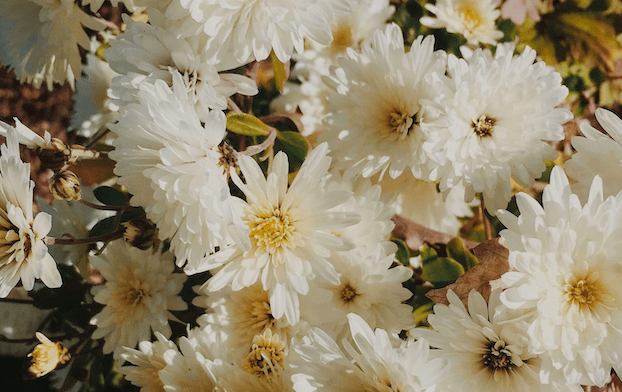A history of flowers
Giving or receiving flowers is something that many of us enjoy. It is often seen as a symbol of love or a way to congratulate someone. As this is such a common tradition, it’s surprising that most of us are unaware of where it came from and who first had the urge to pick flowers and give them to a loved one.
Ancient records show the importance of flowers in many different parts of the world. The Ancient Greeks considered some flowers to be very important and even associated them with gods and goddesses. In 2006, when archaeologists opened a 3000-year-old Egyptian tomb they were very surprised to find ancient dehydrated flowers.
Flowers were seen as a very important symbol in death and life long before the modern-day. Many flowers were also grown for medicinal purposes rather than for beauty. Chrysanthemums were one example of a flower thought to be effective for relieving headaches without the need for painkillers and some people even use this today.
Flowers have had some sort of symbolic meaning for centuries. However, it was only at the start of the 19th century that the language of flowers really became popular in Europe. Many floriographies were written during this time. These were books that claimed to explain the language of flowers and what different types of flowers symbolise. Some books contradicted each other and so the meaning of flowers was often left to personal interpretation. It is believed that in the Victorian era, bouquets were arranged very carefully so that the combination of flowers used could portray a specific message.
The flowers used in the bouquet would often be chosen based on their meaning
Wedding bouquets are essential at most weddings and they too have an interesting history. In Ancient Rome, brides would wear or carry flower garlands as this was a symbol of new beginnings and hope of fertility.
Later on, in the Middle Ages, flowers were often replaced with herbs and spices which were thought to scare off any evil spirits. They also helped to mask body odour as baths were a rarity and luxury at the time. Dill was one of the most popular herbs used as it was known as the herb of lust. If the bride and groom ate some of it at the wedding reception it would lead to an increased sexual desire for each other in their marriage.
In Victorian times, the flowers used in the bouquet would often be chosen based on their meaning rather than appearance or the bride’s personal taste. This is very different from the present day where couples often choose flowers which suit their colour scheme and to make the aesthetic of the wedding more appealing.
Bringing flowers to a funeral is seen as a way to show sympathy and respect
Giving flowers at a funeral is another tradition that has continued on into the present day. A famous excavation of burial sites in northern Iraq found fragments of pollen. The site dated back to 62,000 BC and suggested that placing flowers around the deceased was a form of mourning even back then. This has been added to the Guinness Book of World Records as the world’s oldest form of human ritual.
The number of flowers placed around the body used to vary greatly on the time of year and conditions at the time. This is because before embalming was invented, bodies would begin to decompose and smell as people came to pay their final respects. Placing many flowers around them allowed for the smell to be masked. These days, bringing flowers to a funeral is seen as a way to show sympathy and respect. Local traditions still vary however most cultures believe that flowers are an essential part of a funeral.
Strict rules and regulations for the upper class in the Victorian period meant that romance was not for the public eye. As a way of showing romantic feelings, men would gift small handheld bouquets called nosegays to their love interest. The woman could then read the meaning of this message based on the flowers present and choose how to respond.
These days, we often choose to gift flowers which look pretty
By holding the nosegay to her chest, a woman showed acceptance of the gesture. However, if she wanted to politely decline, she would point the flowers down to the floor and the man would know to back away. This was a form of secret communication as only those who read floriographies knew what the flowers symbolised. This was a very rare occurrence among working-class citizens.
These days, we often choose to gift flowers which look pretty and the meaning of them is not very well known. Roses are an exception to this as almost everyone would associate them with love and beauty. This is why red roses are the most popular flower that is given on Valentine’s Day. In Victorian times, a yellow rose was the symbol of jealousy but this has changed drastically as these days they are associated with friendship and joy.
This has changed mostly because people rarely give flowers to someone they don’t like, something that was common in Victorian times. Other traditions have also changed throughout time, such as how giving flowers to a man used to be unheard of but nowadays it is nothing out of the ordinary.

Comments